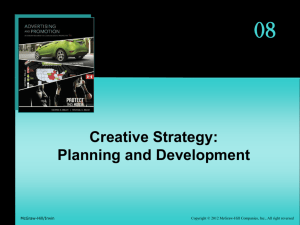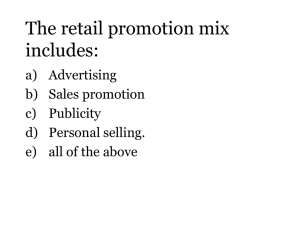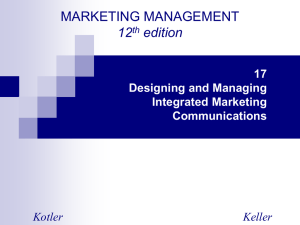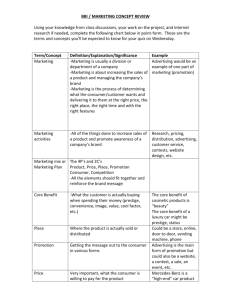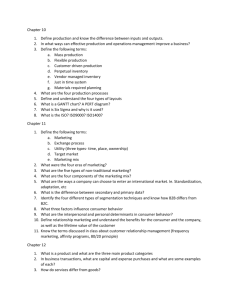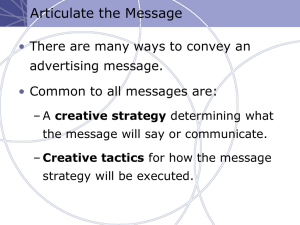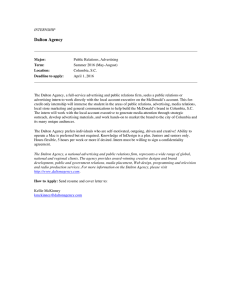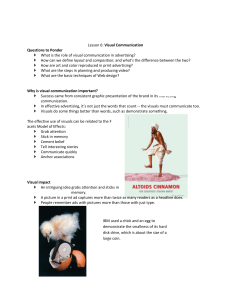www.studyguide.pk Usefulness Of Product Lifecycle For Marketing Decisions Launch or Introduction Stage
advertisement
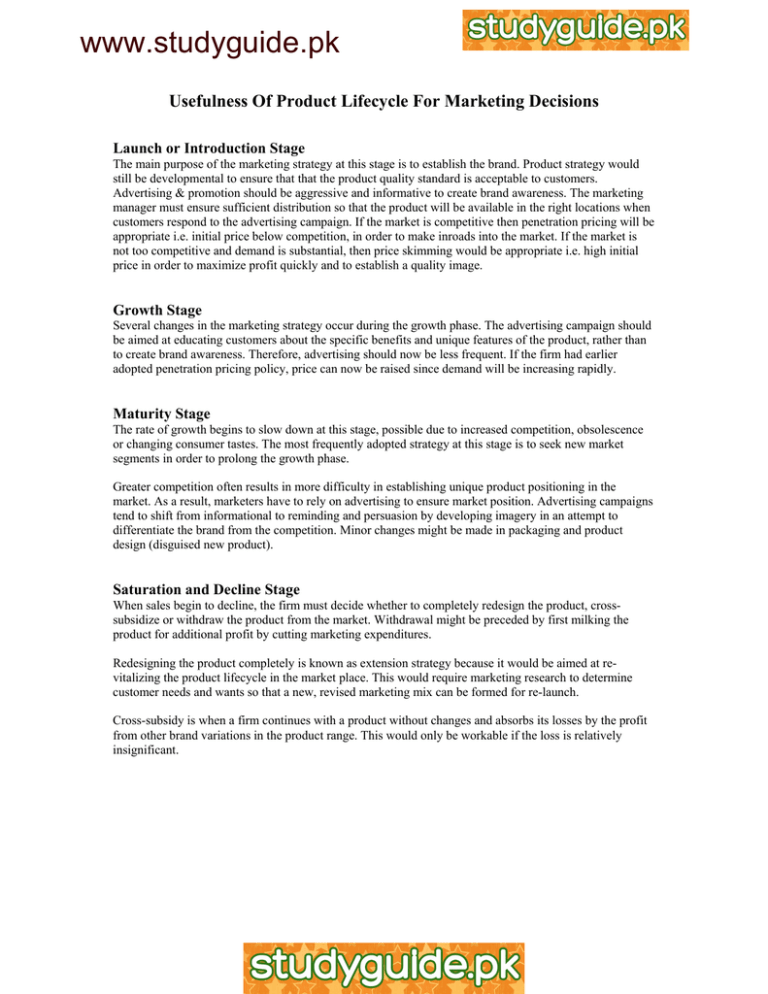
www.studyguide.pk Usefulness Of Product Lifecycle For Marketing Decisions Launch or Introduction Stage The main purpose of the marketing strategy at this stage is to establish the brand. Product strategy would still be developmental to ensure that that the product quality standard is acceptable to customers. Advertising & promotion should be aggressive and informative to create brand awareness. The marketing manager must ensure sufficient distribution so that the product will be available in the right locations when customers respond to the advertising campaign. If the market is competitive then penetration pricing will be appropriate i.e. initial price below competition, in order to make inroads into the market. If the market is not too competitive and demand is substantial, then price skimming would be appropriate i.e. high initial price in order to maximize profit quickly and to establish a quality image. Growth Stage Several changes in the marketing strategy occur during the growth phase. The advertising campaign should be aimed at educating customers about the specific benefits and unique features of the product, rather than to create brand awareness. Therefore, advertising should now be less frequent. If the firm had earlier adopted penetration pricing policy, price can now be raised since demand will be increasing rapidly. Maturity Stage The rate of growth begins to slow down at this stage, possible due to increased competition, obsolescence or changing consumer tastes. The most frequently adopted strategy at this stage is to seek new market segments in order to prolong the growth phase. Greater competition often results in more difficulty in establishing unique product positioning in the market. As a result, marketers have to rely on advertising to ensure market position. Advertising campaigns tend to shift from informational to reminding and persuasion by developing imagery in an attempt to differentiate the brand from the competition. Minor changes might be made in packaging and product design (disguised new product). Saturation and Decline Stage When sales begin to decline, the firm must decide whether to completely redesign the product, crosssubsidize or withdraw the product from the market. Withdrawal might be preceded by first milking the product for additional profit by cutting marketing expenditures. Redesigning the product completely is known as extension strategy because it would be aimed at revitalizing the product lifecycle in the market place. This would require marketing research to determine customer needs and wants so that a new, revised marketing mix can be formed for re-launch. Cross-subsidy is when a firm continues with a product without changes and absorbs its losses by the profit from other brand variations in the product range. This would only be workable if the loss is relatively insignificant.



